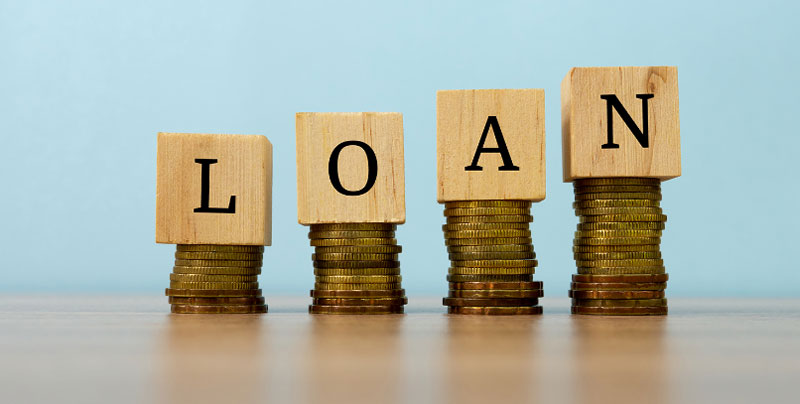Reasons Why Banks Don't Need Your Money to Make Loans
Nov 18, 2023 By Triston Martin
Banks are traditionally viewed as financial intermediaries connecting borrowers and savers by acting as reliable middlemen, enabling the two parties' transactions.
Individuals who make more money than they need can save it for the future by depositing it in a trustworthy bank and creating a savings account. Person money can subsequently be used to lend to those whose incomes fall short of their immediate consumption demands by the bank. In the following sections, see how banks utilise your deposits to make loans and what amount they need your money.
How It Works
As depicted above, the size of a bank's deposit base determines its ability to make loans. To increase its lending capacity, a bank needs to increase its customer base to secure fresh deposits. Deposits are necessary for loans to exist; in other words, deposits are the source of loans.
Bank lending stories are often accompanied by the "money multiplier idea," which is consistent with what is known as fractional reserve banking.
The reserve requirement specifies the size of this fraction, and the reciprocal of that determines the multiple reserves banks can lend out. The multiplier is ten if the reserve requirement is 10% (i.e., 0.1). This means that banks can lend out ten times more than their reserves.
The central bank's monetary policy decisions on whether or not to boost reserves limit bank lending capability, not just their ability to attract new deposits. Commercial banks can only increase their lending capacity by securing new deposits if they operate under a specific monetary policy regime and are not allowed to increase their reserves. In other words, because deposits lead to loans, banks require deposits from you to make additional loans.
Banking in the Real World

Rather than being formed by a group of people putting their money in a bank and trusting it to keep it safe, deposits are created when banks offer credit in today's modern economy. (i.e., make new loans). Banks "generate credit," which means they develop deposits in the lending process rather than giving out the money they have been given.
When a bank makes a loan, it records two entries in its books: one under assets and the other under liabilities. It is an asset to the bank and a disservice to the depositors simultaneously. On the other hand, loans generate deposits, contrary to the narrative above.
This may come as a surprise, given that if loans generate deposits, then private banks are the ones creating new money. However, you may be wondering, "Isn't the production of money solely the right and obligation of central banks? ", If you believe that the reserve requirement restricts banks' ability to lend, then indeed, banks cannot generate money unless the central bank either relaxes the reserve requirement or increases the number of reserves in the banking system.
Bank lending and money creation are not constrained by the reserve requirement, which is a purely theoretical concept. The truth is that banks first lend money and then look for the necessary reserves to repay the loans later on.
Why Aren't More People Getting Loans?

So, if the reserve requirement doesn't constrain banks, what other constraints do they have? This question can be answered in two ways, but both are related. An easy way to explain this is that banks are constrained by their desire to maximise profits rather than by reserve requirements when faced with a specific demand for credit.
To get to our second answer, we need to include the word "risk." Because the federal government insures bank deposits, banks may be tempted to take unnecessary risks when making loans. The government guarantees deposit accounts. Hence excessive risk-taking by banks is in the government's best interest. Capital regulations have been developed to ensure that banks have an appropriate level of capital relative to their existing assets because of this.
If capital constraints, not reserve requirements, restrict bank lending, that is the case. Although capital needs are described as a ratio whose denominator is risk-weighted assets (RWA), they depend on how risk is quantified, based on subjective human judgement.
Some banks may underestimate the riskiness of their assets due to subjective judgement and an ever-increasing desire for profit. Banks still have much room to lend, even if they have to meet regulatory capital requirements.
The Conclusion
As a result, banks' ability or inclination to lend is hampered by profitability expectations. Because banks don't need your money but want your money, here is why. Even though banks prefer to lend money first and then hunt for reserves afterwards, they do so.

Feb 01, 2024
Investment
Navigating Your Way Through Travelex Travel Insurance: A Complete Guide
Explore our comprehensive review on Travelex Travel Insurance, covering its benefits, types of coverage, and tips for choosing the right plan for your needs.

Jan 16, 2024
Banking
Credit Card Tips For Beginners
This article will give an expert view of the best tips to help you use your credit card correctly.

May 17, 2024
Investment
Understanding the Basics of the Stock Market
Learn the fundamentals of the stock market, investment, and trading in this comprehensive guide.

Feb 08, 2024
Investment
Invest in Real Estate for as Little as $1,000
Take the first step towards investing in real estate. We'll show you how to get started and answer any questions about investing in this world with a one-time investment starting at low cost of just $1,000

Oct 11, 2023
Taxes
What Is a Personal Exemption: An Eccentric Guide
Each individual the taxpayer provided was exempt from taxation up to the amount of money set aside for subsistence. To claim personal immunity, the taxpayer must demonstrate that their spouse or dependents meet specific criteria.

Oct 14, 2023
Mortgages
Client Explanations on Soaring Interest Rates and Real Estate
In a competitive free market, government-backed and private lenders bid against one another for homeowners' business, causing fluctuations in the average monthly mortgage interest rate. Due to stable property prices, tightened lending restrictions, and a decreasing backlog of unsold properties, the average interest rate on 30-year fixed mortgages have remained around historic lows since 201

Nov 29, 2023
Banking
Southwest Rapid Rewards Plus Credit Card Review: A Complete Guide
The first credit card offered by Southwest is the Southwest Rapid Rewards Plus Credit Card. You may receive this card by applying online. This card provides favourable travel coverage and an anniversary point bonus that may pay for more than half of the annual charge. Despite the low yearly fee of just $69, this card costs more than it is worth.

Nov 07, 2023
Banking
Credit Reports: An Overview and Guide
A good consumer credit score may have far-reaching consequences on your financial condition, so it's important to be conversant with the information contained in your report. Lenders use your credit score when considering whether or not to provide you with a loan, credit card, or credit line. To determine whether to provide you credit and at what interest rate, creditors often look at your credit score.

Dec 09, 2023
Banking
How to Get a Car Loan With Bad Credit
Even with bad credit, you may still get a car loan.

Oct 01, 2023
Banking
Advantages of Money Orders Over Other Payment Methods
Money orders are a secure and cost-effective way of sending money online. They offer complete anonymity for both sender and recipient, as well as pre-payment for the full amount of the transaction, eliminating any risk of bounced checks or fraudulent transactions

Feb 07, 2024
Mortgages
Homeownership Assistance Missouri
This provides a comprehensive guide to homeownership programs in Missouri. It covers a range of assistance programs available for first-time buyers and existing homeowners, explains how to apply for these programs, what to expect after application, and offers helpful tips and resources for homeowners. It concludes with a short FAQ section answering critical queries about buying a house in Missouri, loan requirements, and the concept of home rule in the state.

Nov 18, 2023
Banking
Reasons Why Banks Don't Need Your Money to Make Loans
Banks serve as a bridge between borrowers and savers in the financial system. On the other hand, banks use a fractional reserve banking system that allows them to lend more money than they have in their accounts.